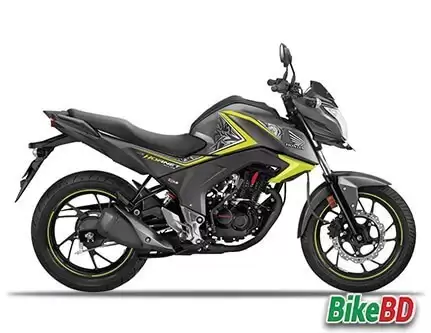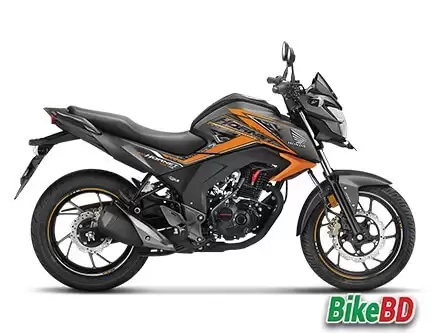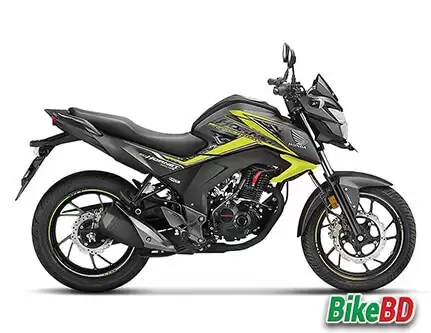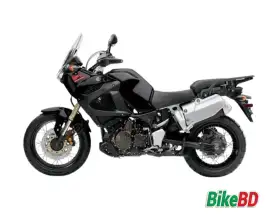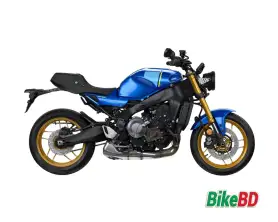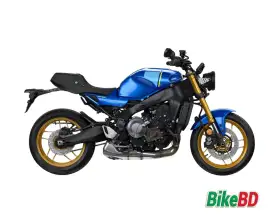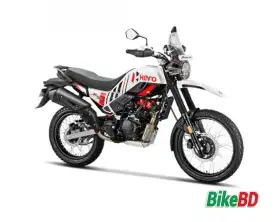Shares 2
Yamaha R15 V.1 vs Yamaha R15 V.2
Last updated on 21-Jan-2025 , By Arif Raihan Opu
If they are coming straight at you there is little chance you'll be able to tell apart the Yamaha R15 V.1 from the newer Yamaha R15 V2. From the rear however, it is a totally different story.
Yamaha R15 V.1 Vs Yamaha R15 V.2
You can be forgiven for thinking they're two different bikes entirely. The most obvious and the most eye-catching difference is the tail of the new R15 v3, which resembles that of the R6. You can see r15 v3 price in bangladesh here.
The new Yamaha R15 V2 now sports a split seat design, with the pillions seat considerably higher than the riders. Coupled with the rear fender assembly and the beefy tyre that customers desired for so long, the new R15 is that much closer to looking like a full-fledged super sports-bike.
.webp)

The tail lights are now LEDs, which are bright and also energy efficient and is placed in a triangular housing. The rear number plate holder and mudguard is positioned below the tail-lights, attached via an aluminum bracket. Removing it when hitting the tracks is a simple process.
Also Read: Yamaha 250cc Bikes In Bangladesh

.webp)
Yamaha R15 V.1
Looks and feel:
The most sought out change that people wanted for their R15's were for fatter tyres. At the front, we now get a 90/80-17 MRF Zapper-FY1 instead of an 80/90-17.
At the rear, we have an MRF Revz-S 130/70-R17. The R stands for Radial, which means the tyre uses radial ply-cords and steel belts in its construction.
If you did not get the last bit, just take it to mean a fat tyre with stiffer tread and lighter weight. Both the tyres are made of soft compound and offer exceptional levels of grip.
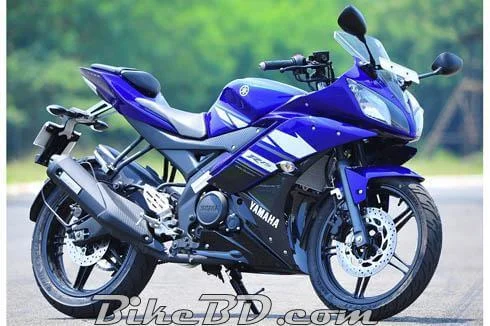
Yamaha R15 V.2
They are mounted on 17 inch alloys that have excess metal carved out to keep weight to a minimum. The rear now has a tyre-hugger with an integrated saree guard to comply with legal requirements. Yamaha have put some good work into integrating this legal requirement quite well.
When you get onto the Yamaha R15 V2, you can instantly notice the increase in the seat height, but your attention soon diverts to the seat surface itself, which feels very grippy beneath your bum.
It prevents unintentional sliding on the seat, but without being too restrictive. So now you get lots of grip not only from the soft compound tyres, but also the seat! This is particularly helpful for the pillion as the grab-rails have been discarded and all you get to hold on to is a half-inch wide strap at the front of the seat.
The handle and foot-peg positions seem unaltered, but due to the raised seat, the riding posture feels a bit more aggressive, especially when tucking in at high speeds.

Yamaha R15 V.2
Given the fat tyres and the low end torque of the previous-gen R15, we expected to see the torque take another steep dive, as on paper the peak power and torque figures remain unchanged.
But we were pleasantly surprised. Despite the extra 5 kilos, the new Yamaha R15 V 2.0 pulls more strongly and easily at lower revs, which makes the bike more usable in stop and go traffic and touring by keeping gear changes to the minimum.
This is achieved by changing the secondary gear reduction ratio from 3.000 to 3.133, a previous 14/42 front-rear sprocket ratio, to 15/47 so that you get more torque in every gear.
Apart from the revised gearing, the engine feels the same as before. The exhaust note however has more bass to it and sounds better.
The silencer has been redesigned with a plastic heat shield that looks like carbon fiber and rises at a steeper angle to keep in line with the new tail. There is a name tag on the silencer to help anyone wondering what bike it is.
Handling and braking:
The new aluminum swing-arm that has trickled down from the R15s bigger brothers increases the wheelbase by 55mm which imparts more high-speed and mid-corner stability to the bike.
It feels less twitchy when making small corrections or going over bumps. Flicking it from one direction to another however requires little more effort compared to the older R15. Those who are new to the bike might prefer the older versions maneuverability while veterans might opt for the increased stability to carry more speed out of a corner. Overall, the bike feels more planted and less eager to change directions due to the increased wheelbase and extended trail, but once you get it leaned over, it is easier to stay that way through the corner.
The Nissin brake calipers are unchanged except for their colour which is now plain black, while the disc rotors have been upgraded, the front is the same size as before but the rear is now 220mm in diameter. Braking remains as good as it was with the previous generation.
List of changes:
Increase in wheelbase from 1290mm to 1345mm Seat height up from 790mm to 800mm Decrease in over all length from 1995mm to 1970mm Larger radius 220 mm rear disc Larger section 130/70 rear tyre, 90/80 front Increase in weight by 5 kilograms, the R15 V.20 weighs 136 kilograms Changes to the ECU programming (re-mapped) to ensure a better off the line performance Long aluminum swing arm_ New Sprockets LED tail lights Re-designed middle and tail section Upgrades to the clutch and throttle pulley (Twin throttle cables) New design alloy wheels New exhaust pipe Louder, twin-tone horns Slightly tinted visor Sticky split seats that provide more support to the rider when hanging off to the side
The redesigned front fairing now protrudes a bit further below the headlights reducing the apparent gap between the mud-guard and the headlight assembly, lending the bike a sporty crouching-and-ready-to-pounce look. And with the pointy tail, the image of a wasp that's ready to sting comes to mind.
.webp)
On the other hand, features that come to be expected of a bike that screams of racing heritage like a lap timer and/or a top speed recorder are sorely missed. At the very least, a clock could have been provided!
The R15 was very good as a track-bred machine, but there were some shortcomings for everyday use, most notably the meagre low-end torque.
Also Read: Yes Motors in Jhenaidah, Khulna.
One would have to rev the engine a lot more than rival bikes to get it up to speed from a stand-still. While the bike looked awesome with its full fairing, the tyre size was an eyesore.
The Yamaha R15 V2 overcomes these issues with altered gear ratios so that there is torque available right from the lower revs. The new body work, the pointy tail, the meaty swing arm, the beefy tyres and a deeper exhaust note up the ante to a new level. This simply has to be the best looking 150cc out there.
FAQ - Frequently Ask Question_
1. What is the smallest motorcycle in Yamaha?
Ans- The smallest motorcycle is Yamaha SR400.
2. Who started Yamaha motorcycle?
Ans- Genichi Kawakami started Yamaha motorcycle.
3. Who is the CEO of Yamaha motorcycle?
Ans- Yoshihiro Hidaka.
T
Published by Arif Raihan Opu





